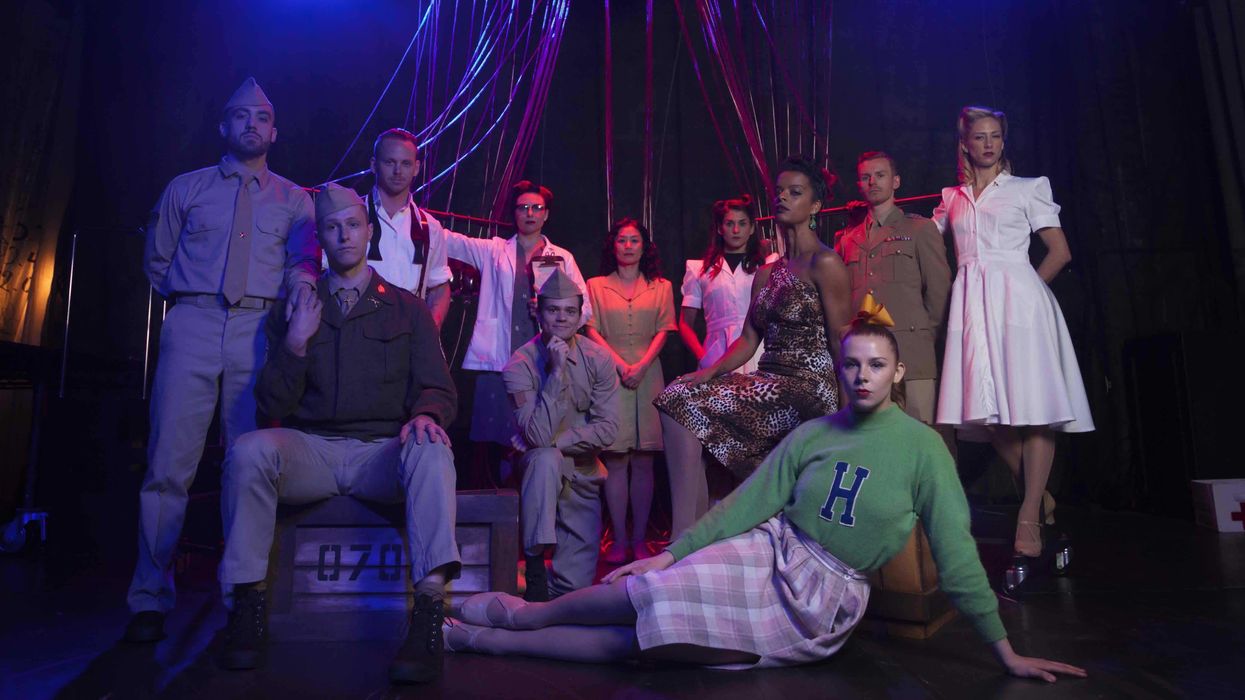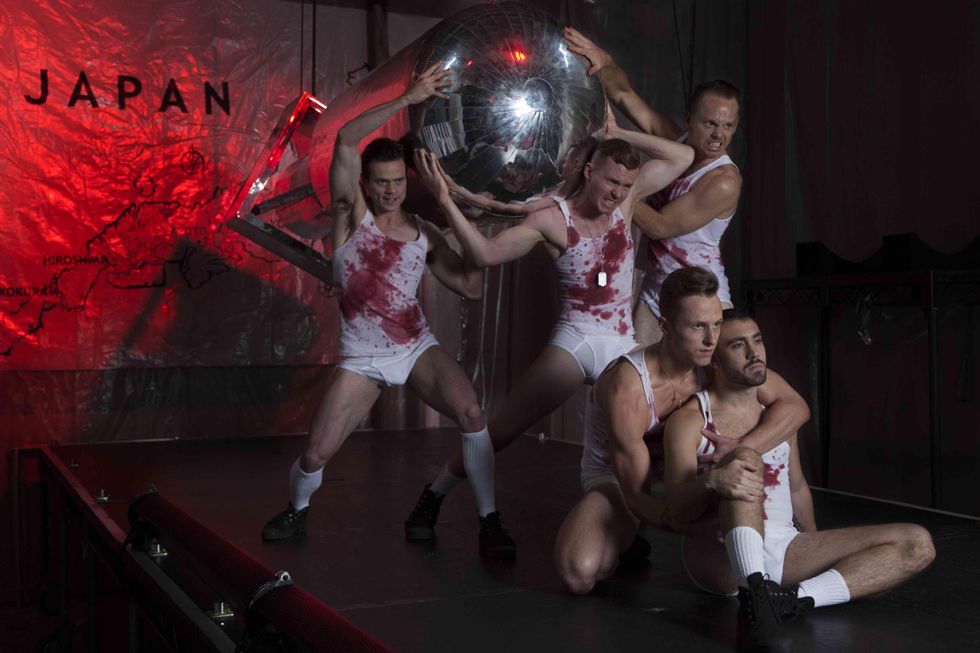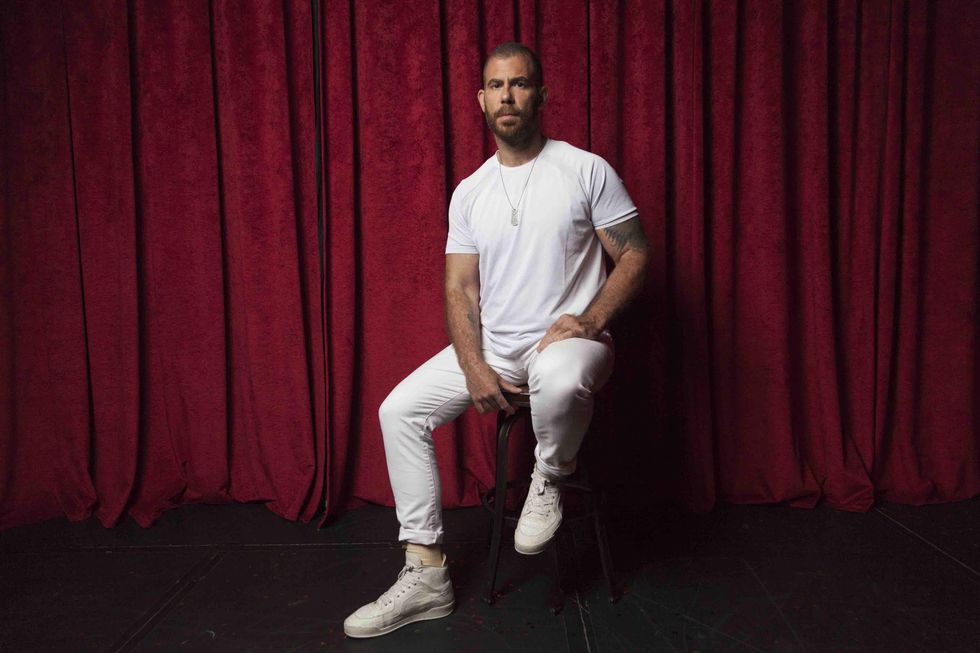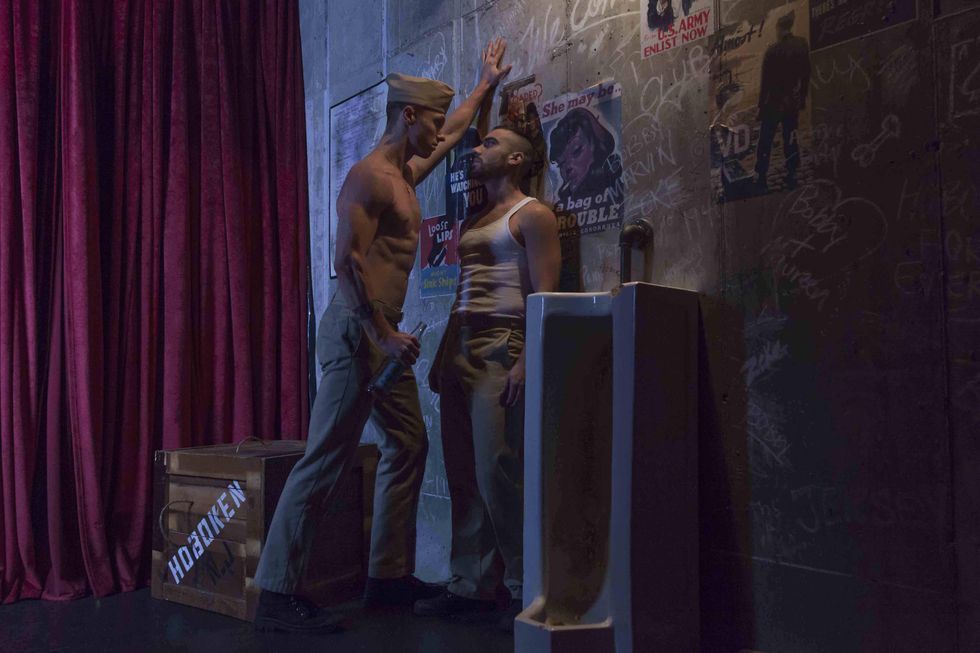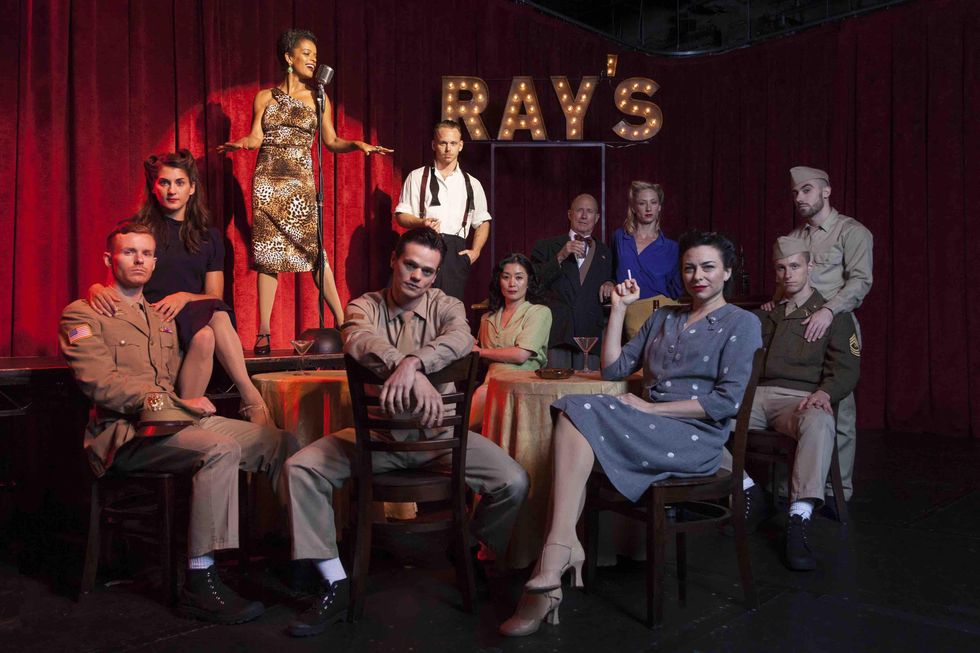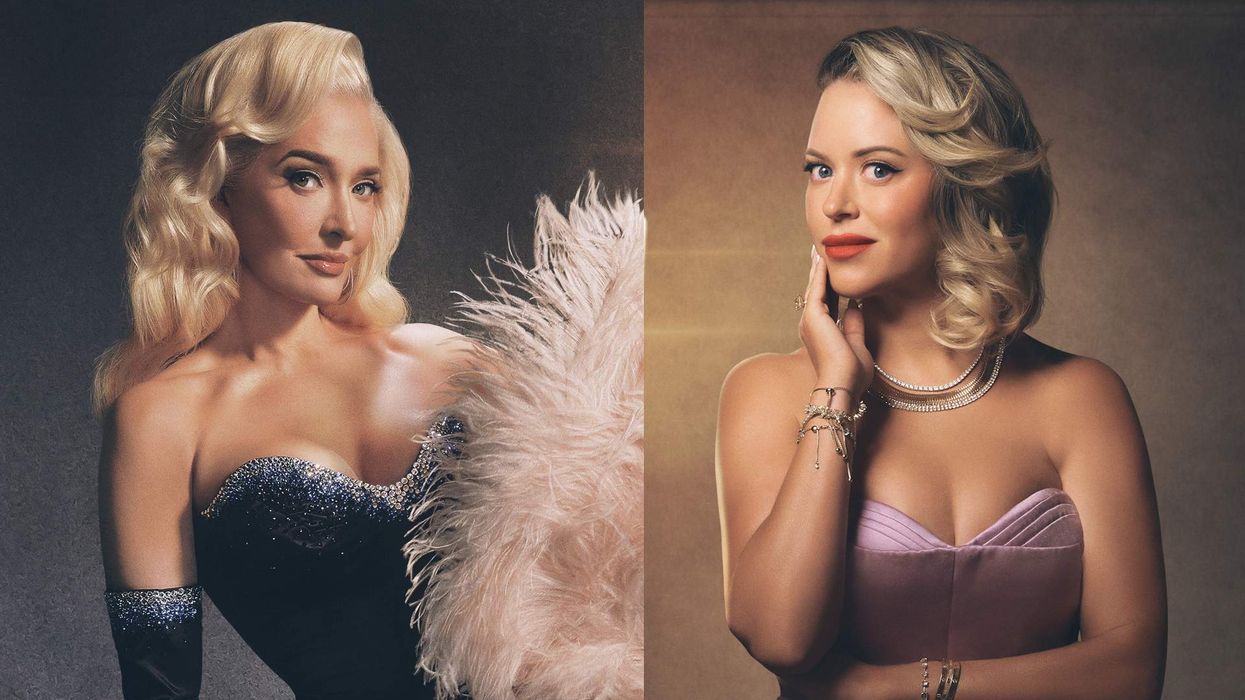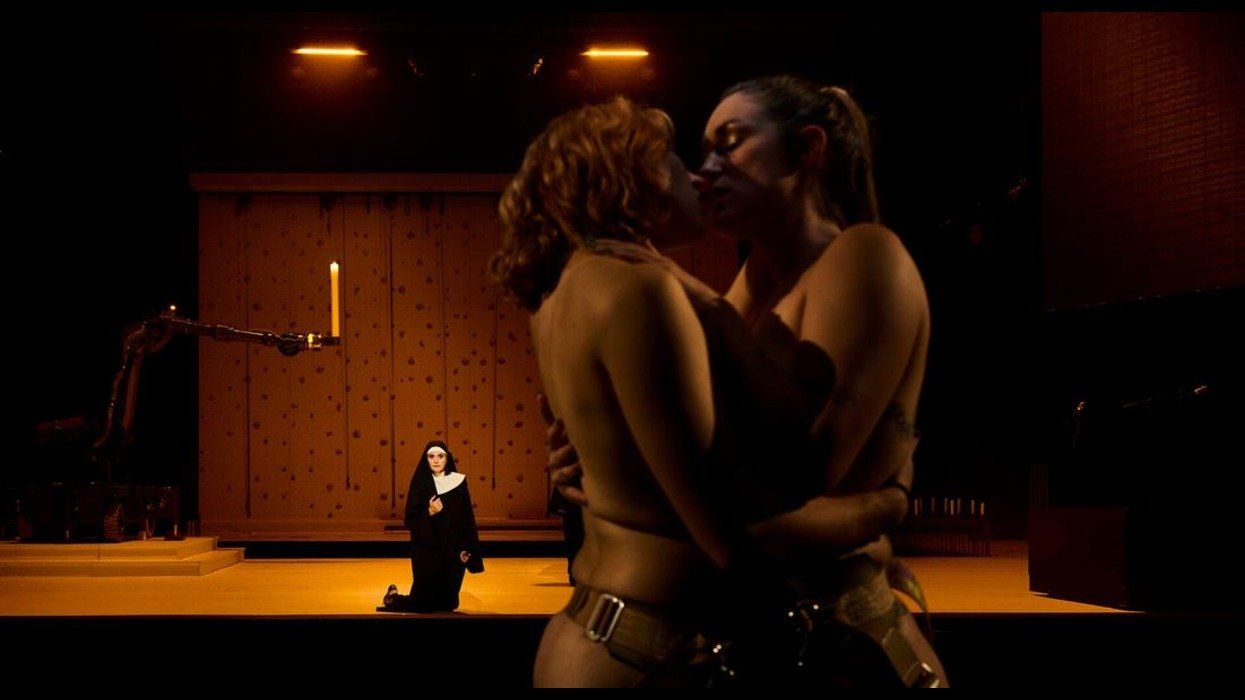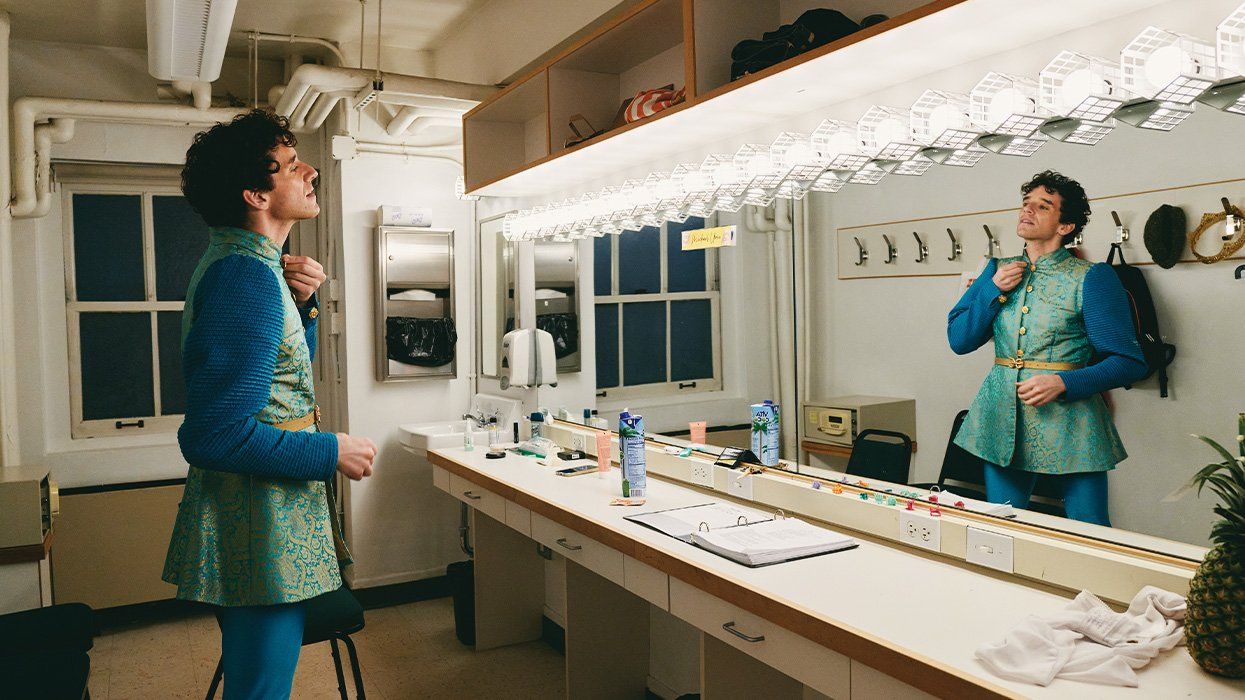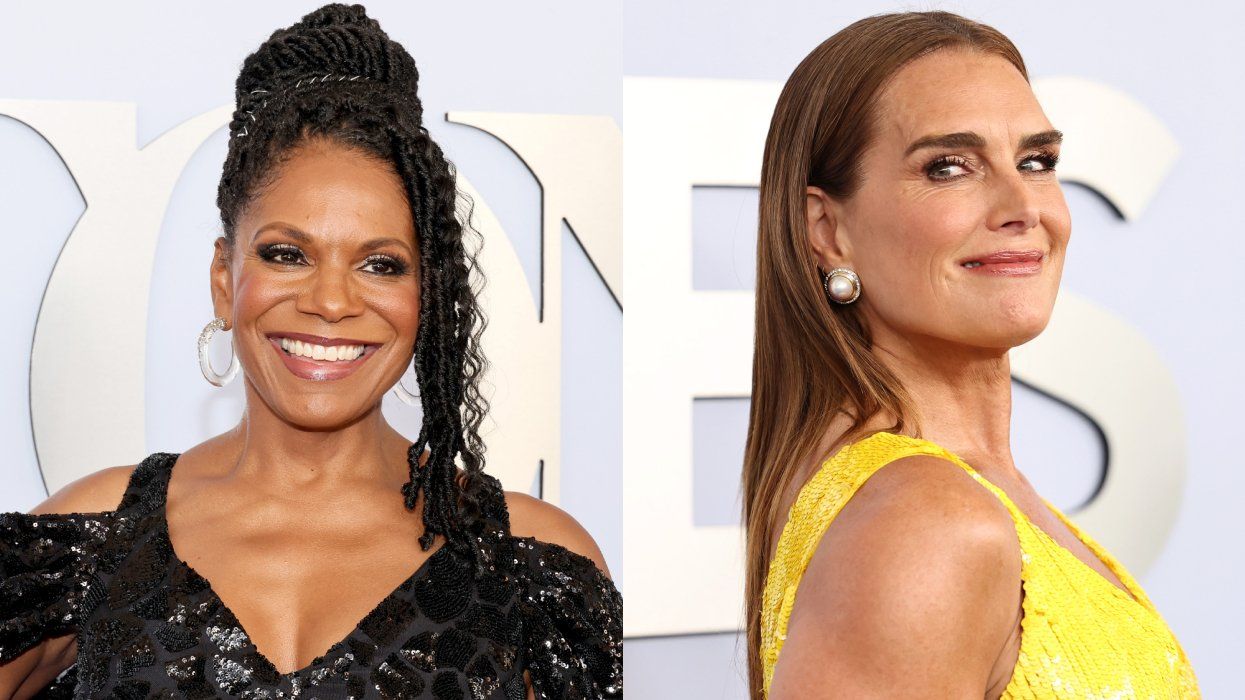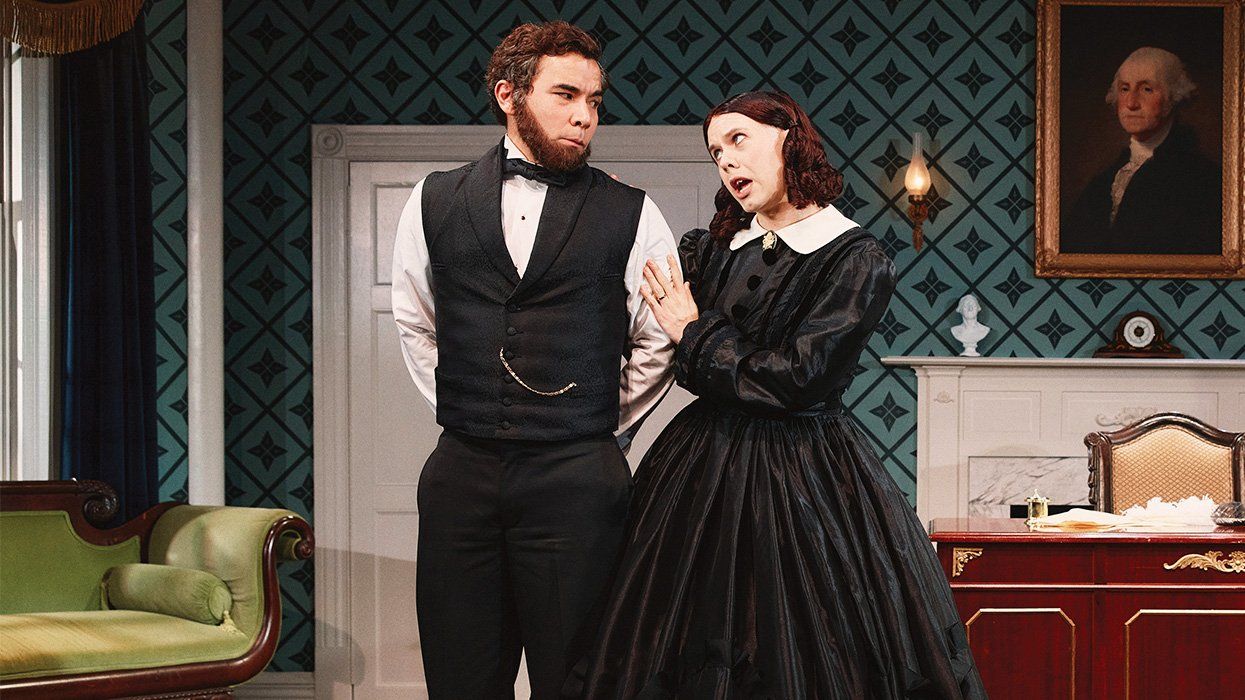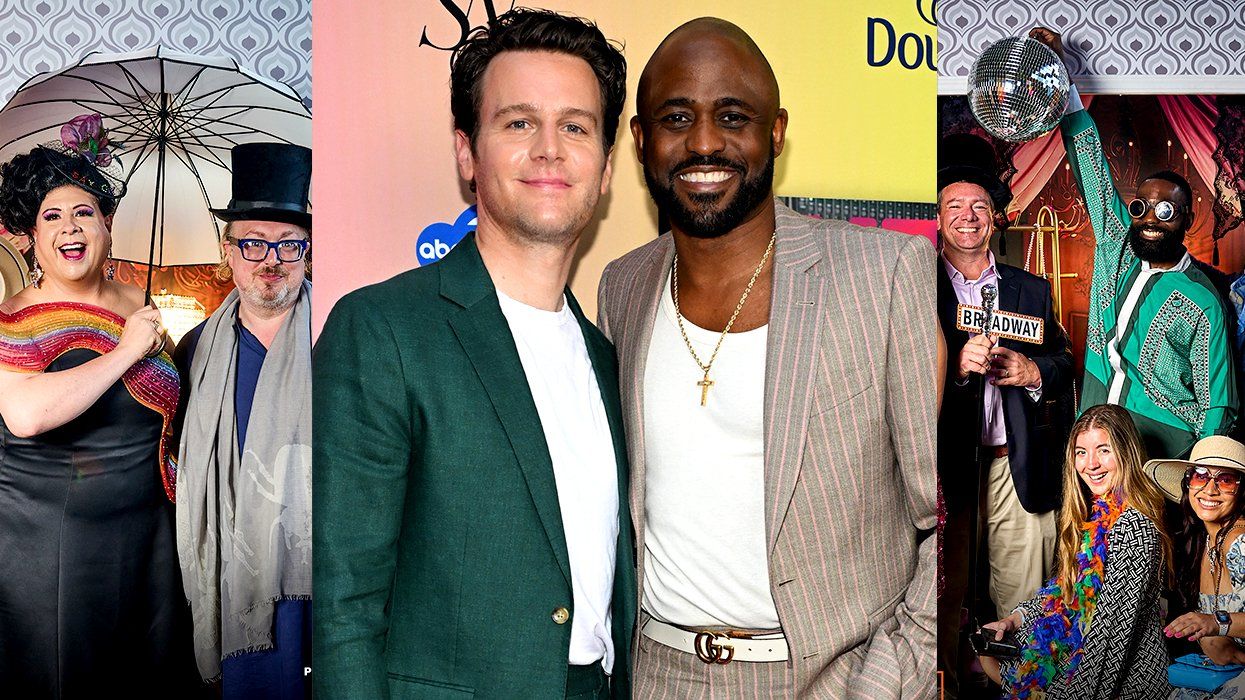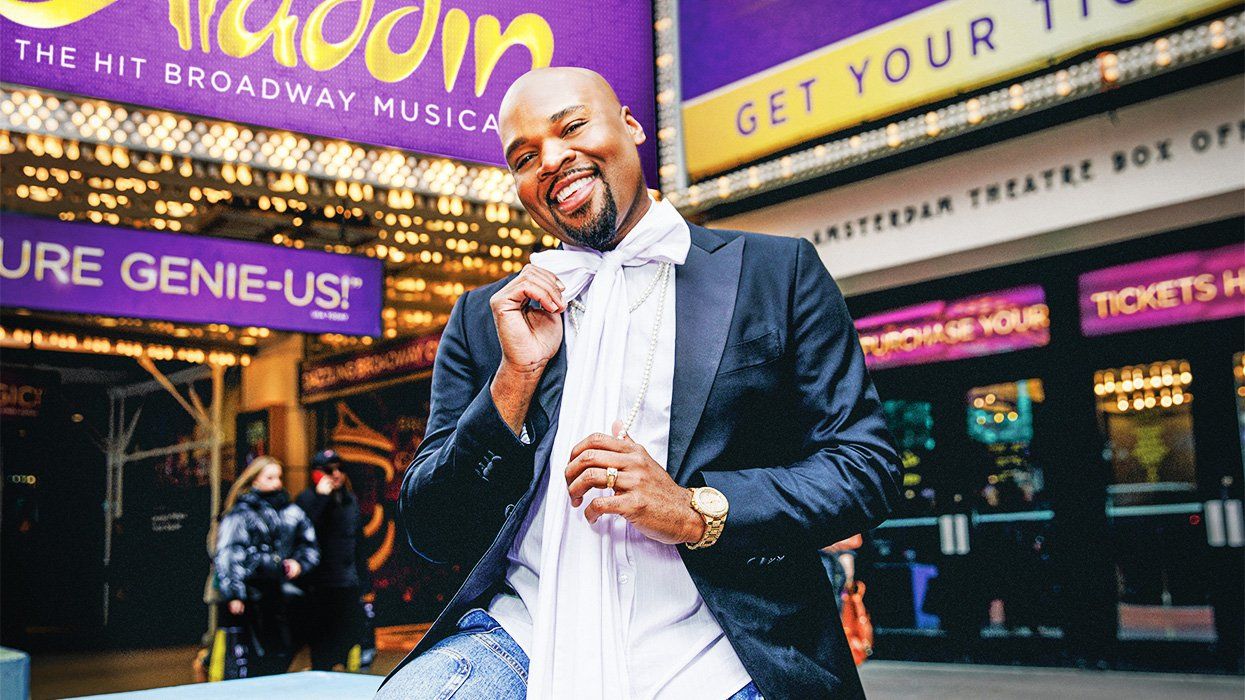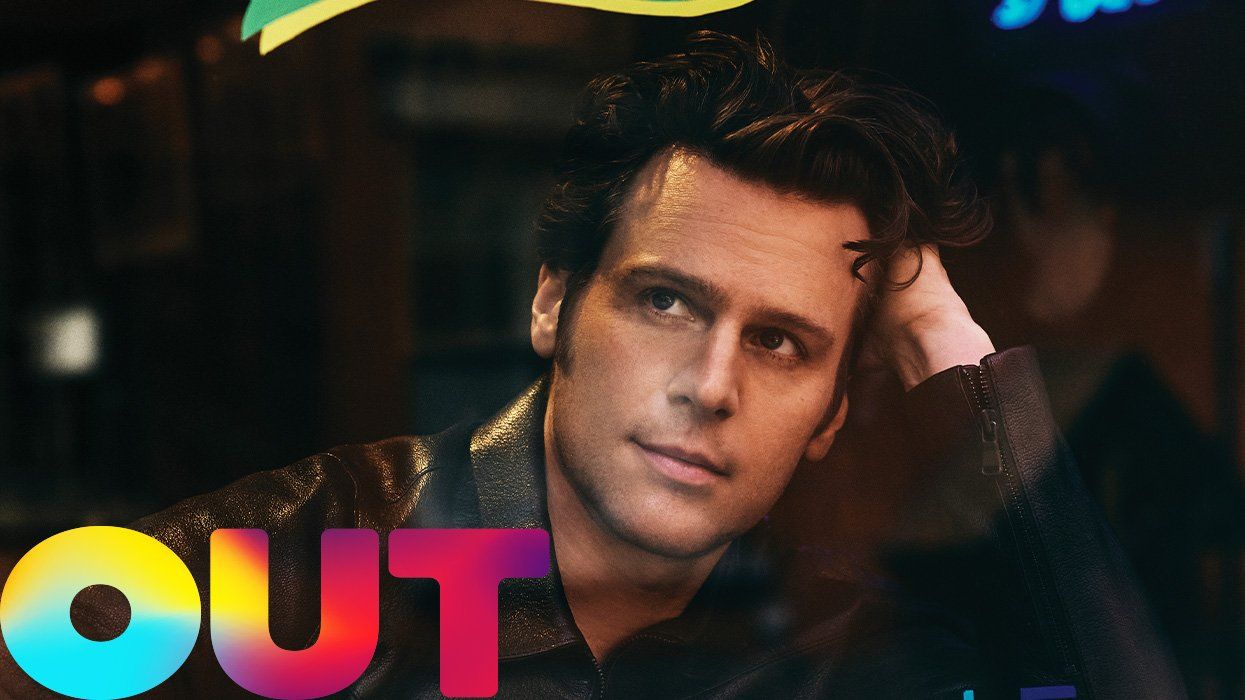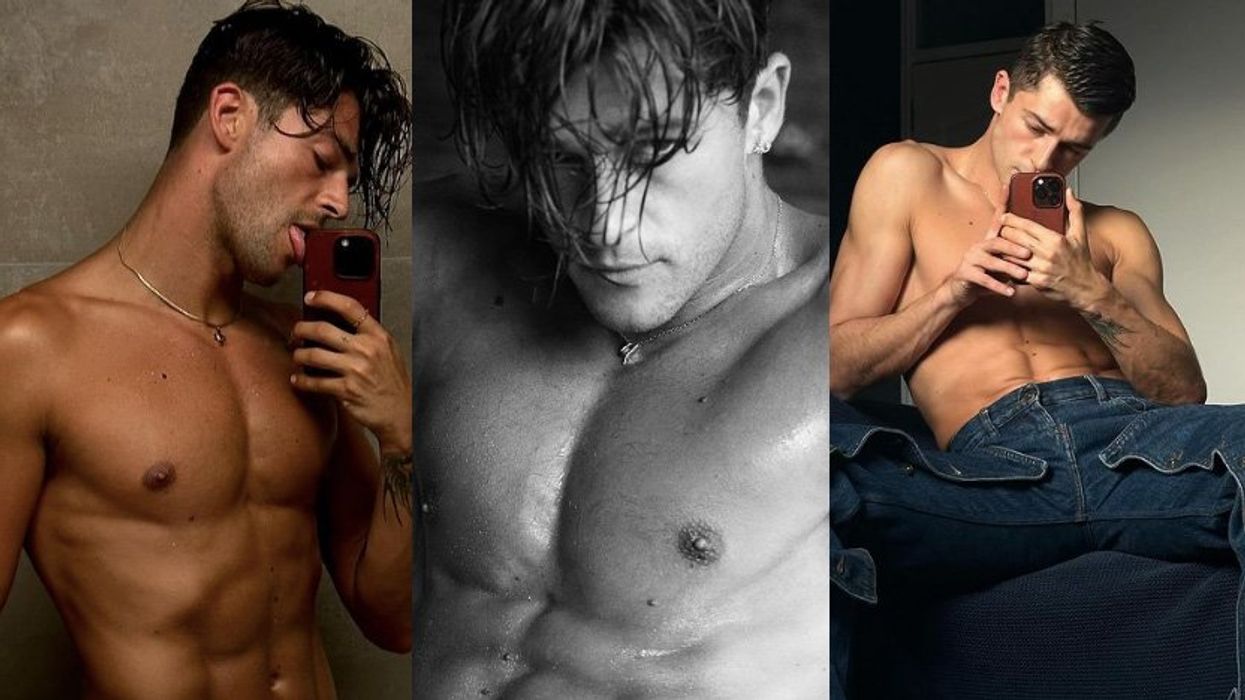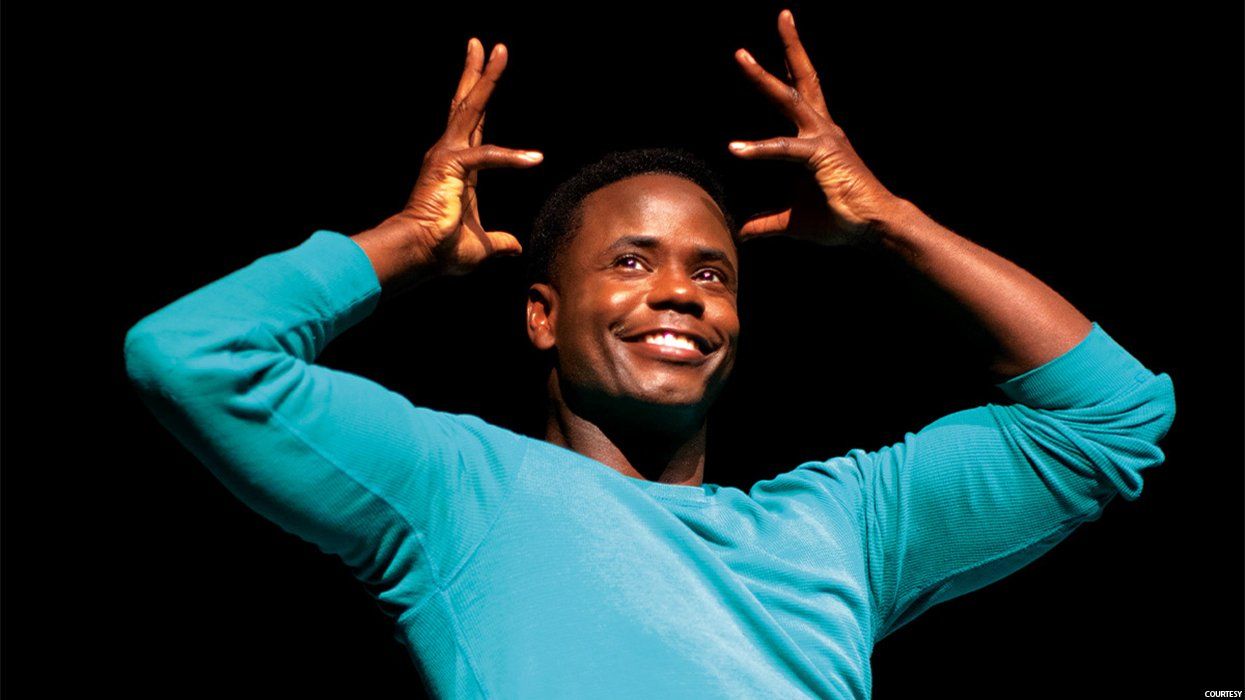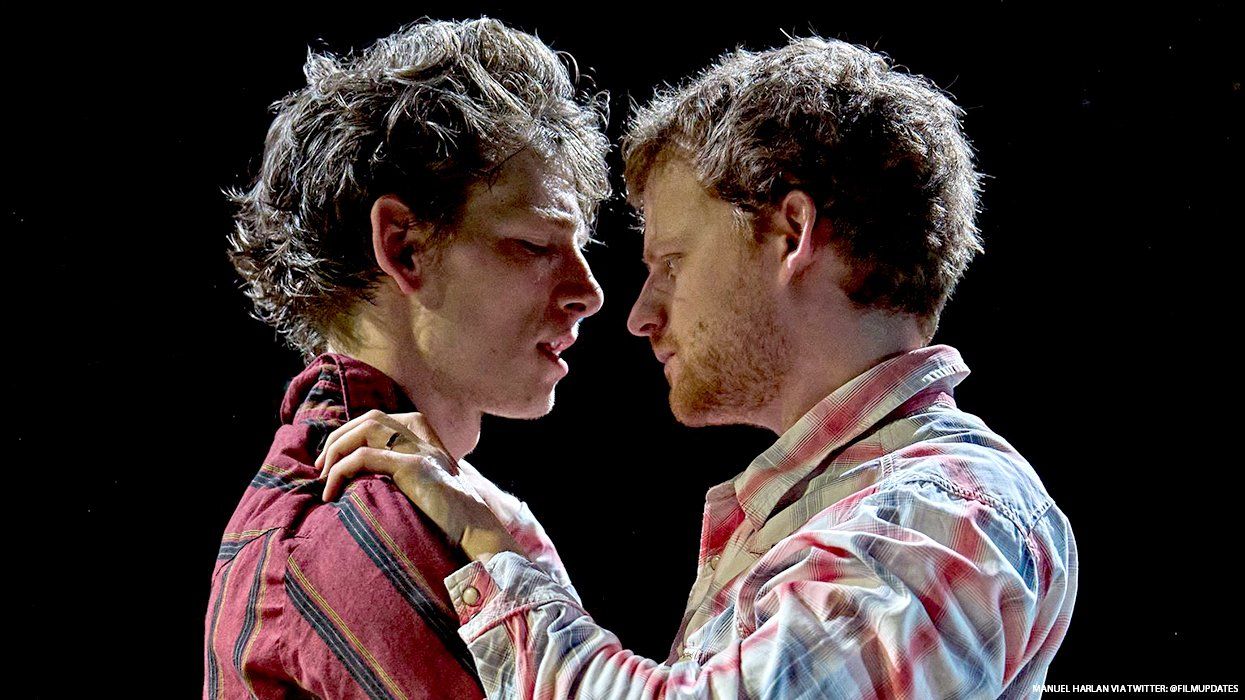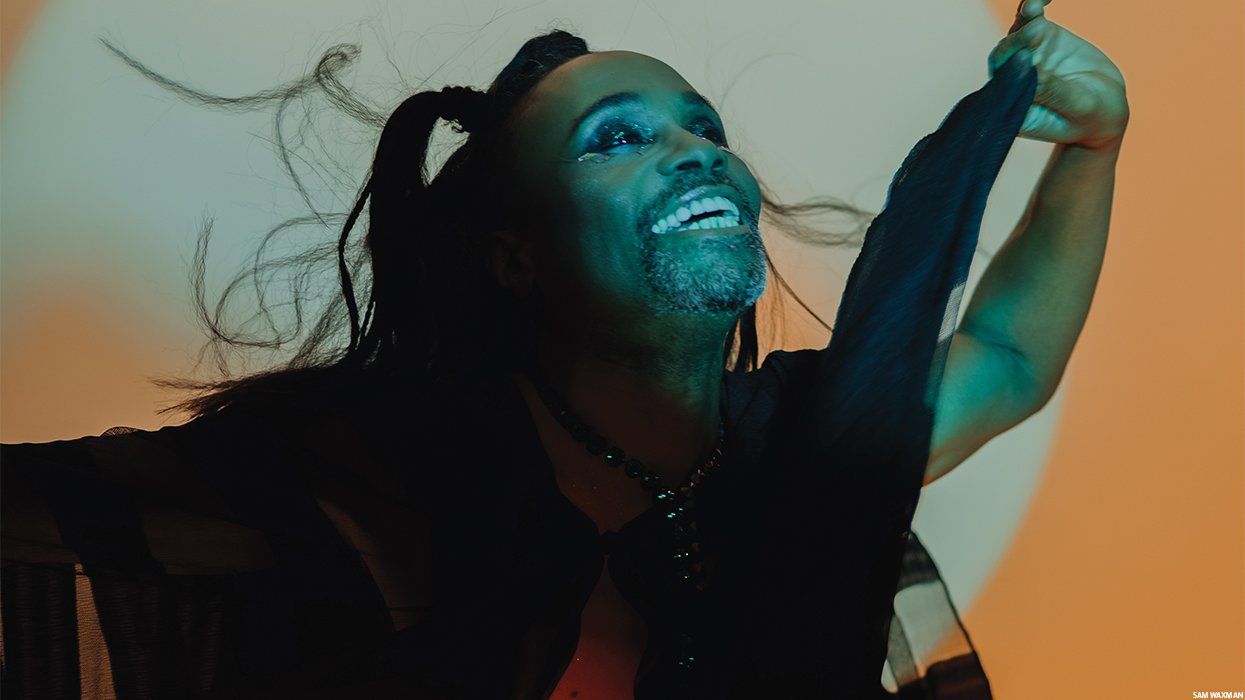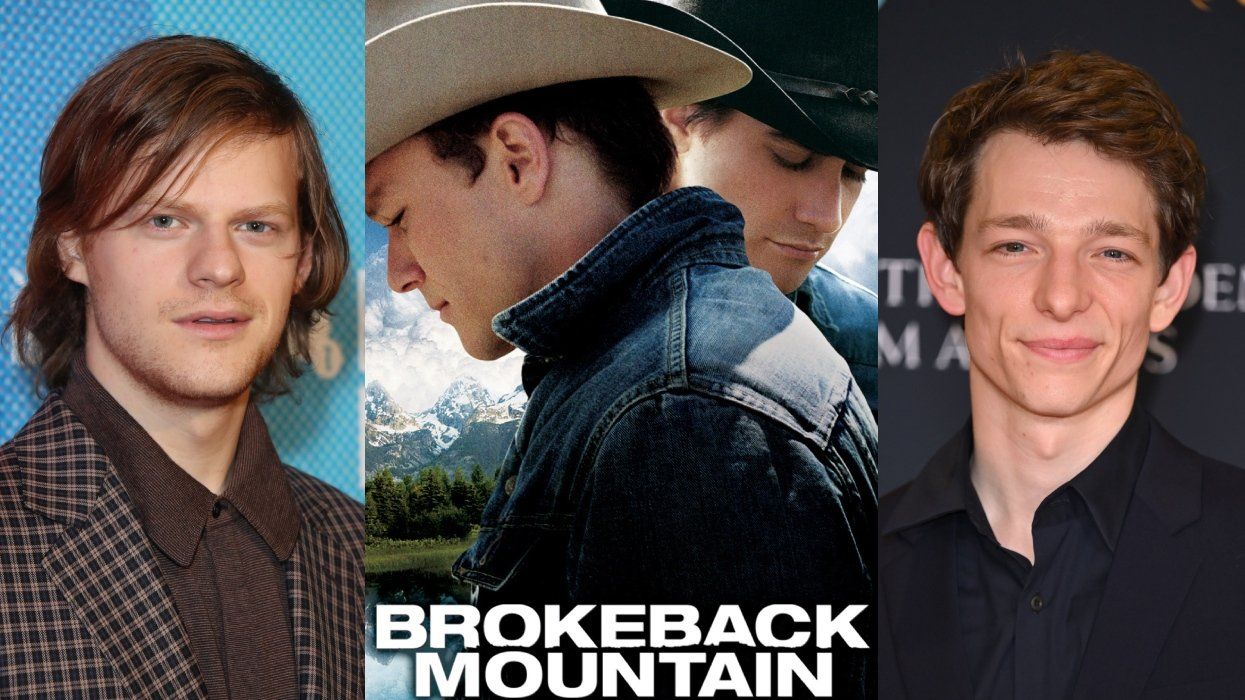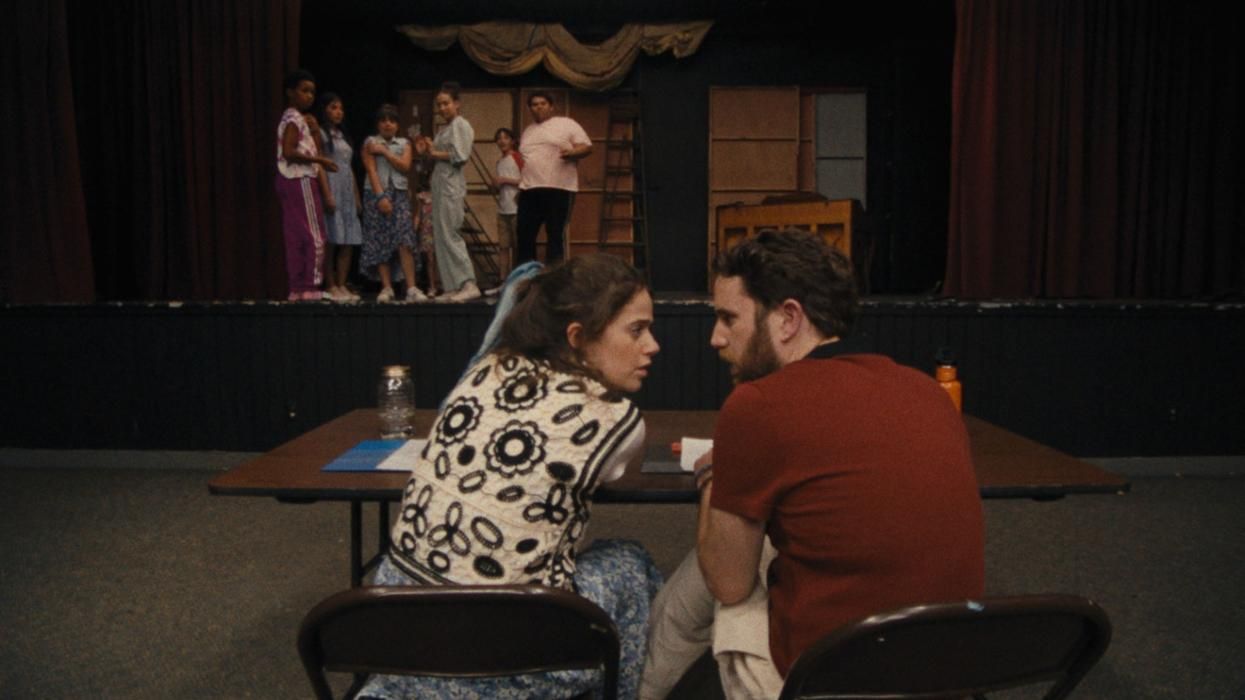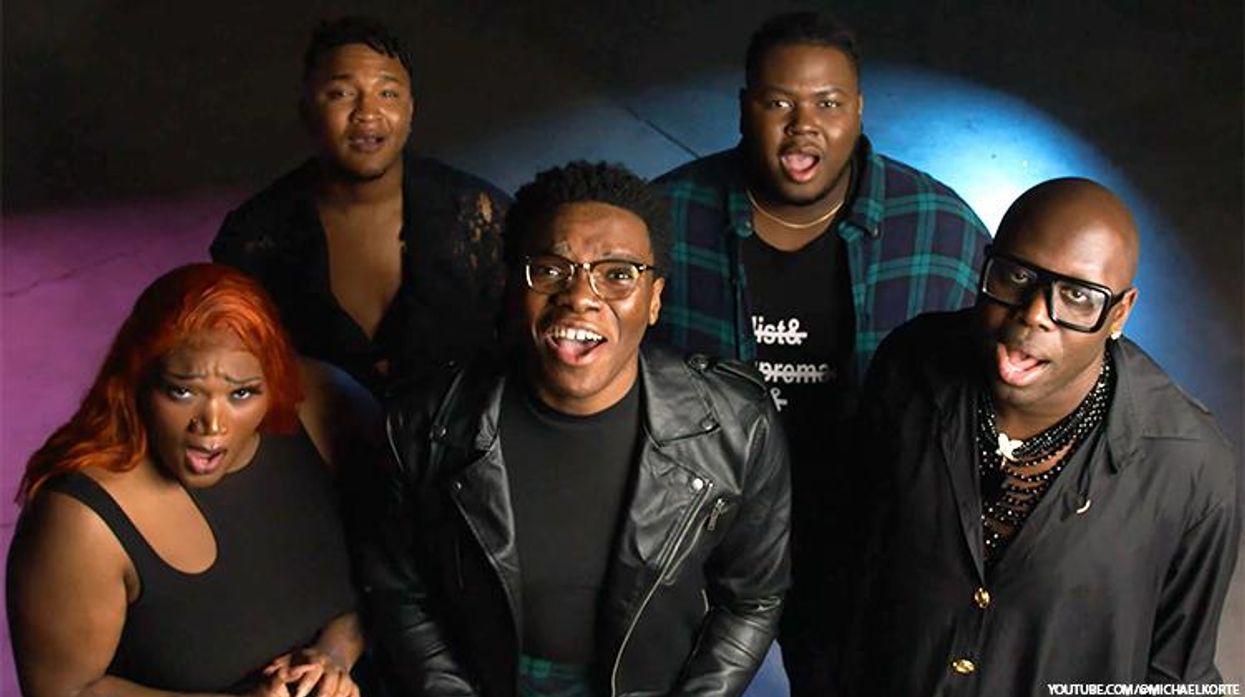When entering Seeing You, an immersive theatrical show currently housed in an unassuming space beneath Manhattan's High Line Park, audience members are ushered inside in militaristic fashion. At the door, each is handed a dog tag as opposed to a ticket stub. Each receives a mysterious slip of paper stamped with a serial number. And each is firmly instructed not to speak unless spoken to. After walking across a concrete floor and slipping behind tall curtains, the crowd steps into a vast industrial space where the action is already underway. In one corner, a pregnant wife is talking heatedly with her husband about his going off to war. In another, a Japanese-American woman is being prodded by a white man about a letter she received from a loved one. There are no seats. There are no refreshments. And, initially, there is no guidance for the patron--just a multi-faceted, multi-narrative spectacle to absorb.
Related | Gallery: Seeing You
"I'll spot a woman wearing a little black party dress and high heels and I'll think, Oh no, I'm about to ruin her night," says Randy Weiner, the creator and co-director of the production, and the man behind other groundbreaking New York shows like Sleep No More and Queen of the Night, a lavish, interactive slice of dinner theater that took its final bow on New Year's Eve, 2015. "I'll look at her and think, What is she doing here? She thinks she's going to see Queen of the Night: Part II."
Actors Aaron Dalla Villa, Zach McNally, Jay Stuart, Nicholas Ranauro, and Robert Cloglitore
She isn't. While Seeing You retains the viewer-as-participant spirit of Weiner's related works, and its interior world is awe-inspiring (albeit in a different way), this latest bit of anti-Broadway is sparing by comparison. Less a feast for the eyes than a quiz show for the brain, Seeing You drops you into a twisted vision of WWII-era America, where roughly 12 characters--black, white, male, female, gay, straight, and Asian--create a tapestry of near-simultaneous experiences, an approach that tends to result in no two viewers seeing quite the same show. (In their dual review in The New York Times, theater critics Ben Brantley and Jesse Green took a conversational approach, sharing their respective Seeing You adventures in order to doubly unpack the material).
"You don't necessarily get the whole narrative, but you definitely interact with different parts," says Weiner, who opts to point out a thread involving two male soldiers who develop a love affair as the show unfolds. "First, the two characters have a scene at a urinal where they scope each other out. Then they have a scene where they kiss and essentially consummate their relationship, and the one soldier's wife shows up. And then there's the USO scene where the younger guy goes out and does a drag number, in all his glory. It's funny--I'll talk to a lot of people who only see one of those scenes."
Production and costume designer Desi Santiago
Weiner says the LGBT element was particularly important to his co-director and choreographer Ryan Heffington, the queer, Grammy-nominated virtuoso behind the dance videos for Sia's "Elastic Heart" and "Chandelier," among many others. Although the genesis of Seeing You can be traced back to a series of talks with the Frank Sinatra estate, which was looking for ways to revive the iconic artist for modern consumers (his take on the classic song "I'll Be Seeing You" bookends the show and contributed to its name), the rest of the music can be credited to Heffington, who leaned toward contemporary sounds to amp up ambiguity and attitude. And Heffington's signature style of rigorous interpretive dance--which in music videos has conveyed everything from angry desire to crippling grief--brings an alternately disturbing and inspiring humanity to Seeing You, whether in moments when actors nearly crumble as if weighed down by the war, or when the two male lovers engage in a push-pull that adds up to the suggestion of sex.
"We never wanted to make something that was heavy-handed," Weiner says. "Ryan and I both like abstraction, and leaving things open for people so they can have their own ideas. We were never trying to be so didactic." Furthermore, Weiner claims he didn't set out to make a political work--WWII simply gave him the dramatic backdrop he needed to craft a zig-zagging story about people. "That's why I called it Seeing You--because it was about really trying to see people. That's what really interested me. The title is obviously a cute play on the song 'I'll Be Seeing You,' but can we actually see each other in these moments of crisis? Or are we seeing each other less? Are we seeing more of our true selves? Does it actually reveal more of our true selves? There are people who say that you don't really know somebody until you see them in crisis. I like that, and I was drawn to that."
Nicholas Ranauro and Robert Cloglitore
As an example, Weiner loops back to the plight of the pregnant woman versus the plight of the Japanese-Amercian--the one character in the show who mirrors the enemy of the America on display, and the one character who, at one point, quite literally doesn't have a seat the table. Naturally, there are clear political implications here, but for Weiner, it cut deeper, for better and for worse. "In the story, we don't actually care about Grace," he says bluntly of the Japanese-American. "What's so profound about life--and I love this in the show--is that, actually, Grace doesn't matter. There's a pregnant lady who has her white husband going off to war, and she's not thinking about Grace's struggles at all. She doesn't have time for it, and in a way, I think that's great. Seeing You isn't focused on one final moment, but fourteen different moments, and each character is dealing with their own bag of shit. And isn't that how the world is?"
Another queer artist recruited to bring Seeing You to life is renowned production designer and installation wizard Desi Santiago, who's parlayed his past absorption of New York's vibrant nightlife into daring work for fashion shows, exhibitions, and more (one of many career highlights is his collection of masks for the late Alexander McQueen's Savage Beauty presentation). Relating to Weiner's sentiments, Santiago says, "I saw the narrative as a series of intimate relationships in which individual dynamics ricochet off each other to feed the overall organism of a community. WWII is the backdrop, yes, but I think this story can take place in modern day or in another culture as well." It may seem modest when stacked up against the pageantry of something like Queen of the Night, but that doesn't mean Seeing You is without its eye-popping features, and Santiago is the man to thank for that. In one sequence, when patrons are instructed to donate blood, they're guided by "nurses" to an area beneath a massive red cross, which emits menacing neon light and, like a hydra, has dozens of tentacle-like tubes dangling from it.
Zach McNally, Lauren Yalango- Grant, Lauren Cox, Aaron Dalla Villa, Jay Stuart, Meek Kameoka, Ted Hannan, Heather Lang, Jodi McFadden, Nicholas Ranauro, and Robert Cloglitore
And the project certainly posed its challenges. "There was a lot of unknown in preparing for the immersive aspect of the show," Santiago says. "I've created immersive environments in the past, but I didn't have a previous experience quite like this. I could imagine as much as I wanted but until you actually have a crowd in the space, it's all guessing. When you're finally moving 120 bodies in and out of rooms, and simultaneously reconstructing the space in real time, that's a feat in itself." And yet, Santiago--who personally describes Seeing You as "an evocative and seductive journey through a collective fever dream"--felt his efforts paid off amid his swirl of emotions when first seeing the show with an audience. "I felt nervousness and tension, but a lot of excitement. You never know when you're an observer or when you're being observed."
Which is course the sort of response that Weiner has strived to elicit. Since workshopping the show and eventually opening it in June, he's been met with a plethora of reactions, including the disapproval of a race consultant who quit when she found the show too objective, and the tearful compassion of a devout Trump supporter who was moved by the gay soldiers' romance. Weiner says that more than any of the shows he's previously done, this "pop-up," as he calls it--which ends its initial engagement in August before reappearing somewhere else--has been in high demand beyond New York, with L.A. especially hungry for it.
Seeing You's unavoidable parallels to the precarious, increasingly segregated politics of today are surely heightening its appeal, but Weiner may be onto something in refusing to dub it a political work. As the show's explosive finale ultimately reveals, the creator has presented a forum where liberals and conservatives are all--indeed--given a chance to be seen, and while your neighboring patrons may not end up being who you thought they were, you may just be inspired to discover what makes them tick. "I think it's so cool to create something that can have a tail that's longer than a Broadway show, where everyone gives a standing ovation and then walks out onto the street," Weiner says. "Broadway shows are structured in a way that's complete--you live in your little bubble. Here, in many ways, the end is just the beginning--the start for you to talk about it."
Photography by Harol Baez
Costumes by Desi Santiago
Shot on location at the Seeing You theater space in Manhattan
Special thanks: Shoshana Fisher


